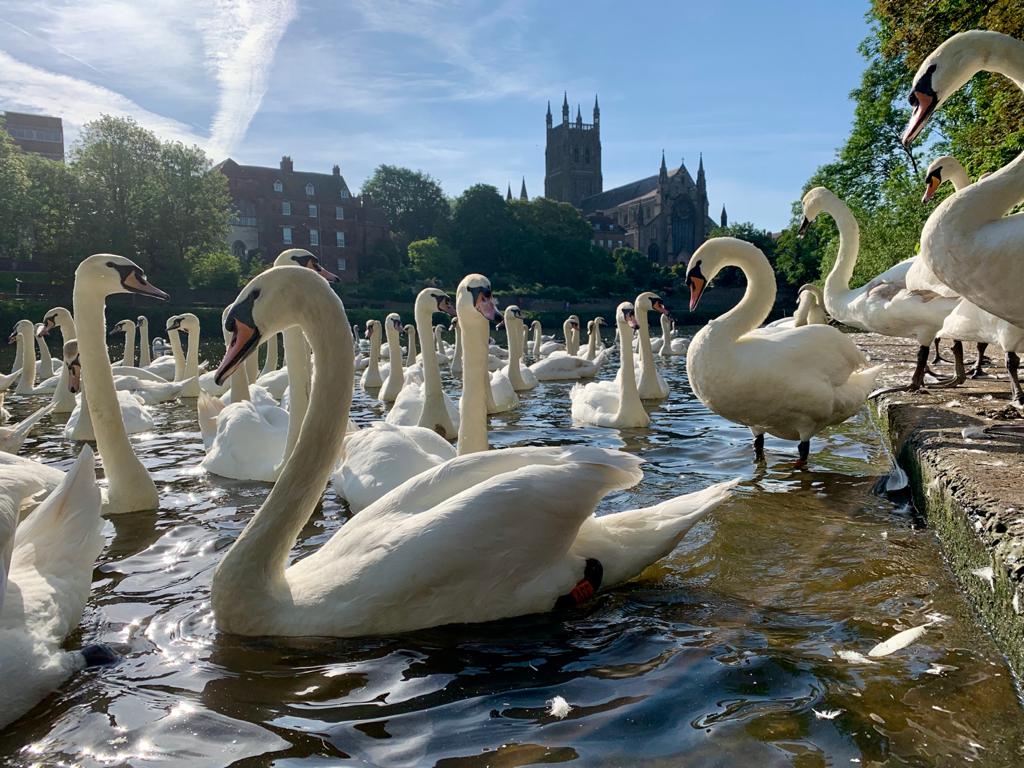In any doubt?: Visit Is this Swan OK?
Avian influenza outbreaks in recent years have seriously limited the help available to water birds. In-patient care is not always possible for fear of introducing the disease into the rescue centre. Phone the relevant number to find out what help is available.
In North Worcestershire phone 07867 672758 for assistance. Redditch based.
In South Worcestershire phone:
Vale Wildlife Hospital: 01386 882288 (Near Evesham)

See: Dead swans in Worcester City
For other areas, try your Local Authority

See: Other injured wildlife

See: Dog attack?

